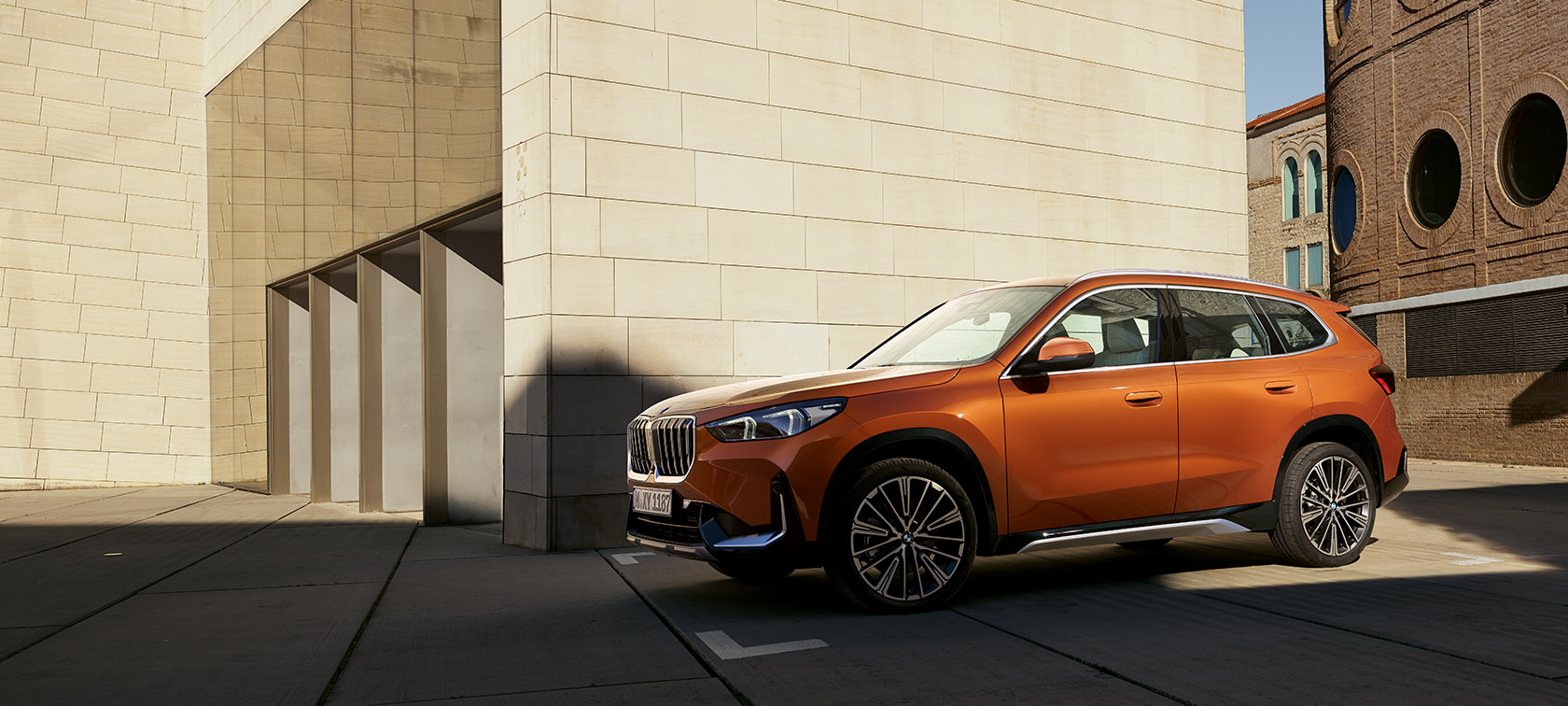Our tool for managing your permission to our use of cookies is temporarily offline. Therefore some functionality is missing.

THE X1
BMW X1: ENGINES & TECHNICAL DATA.
The key facts and figures for the BMW X1 at a glance:
- Engine, consumption and CO2 emissions
- Performance data such as displacement, hp, Nm and acceleration
- Weight, dimensions, wheel and tyre sizes
TECHNICAL DATA.
- BMW X1 sDrive18i
- BMW iX1 xDrive30
-
No search result found. Please try another input

| Powertrain type | Petrol |
|---|---|
| Power in kW (hp) | 100 (136) |
| Torque in Nm | 230 |
| Transmission | 7-speed, automatic |
| Drivetrain | Front-wheel drive |
| Cylinders | 3 |
|---|---|
| Displacement in cm3 | 1499 |
| Nominal power in kW (hp)/1/min | 100 (136)/4400-6500 |
| Nominal torque in Nm/1/min | 230/1500-4000 |
| (Nominal) power/30 minutes power in kW (hp) | - |
|---|---|
| (Nominal) torque in Nm | - |
| Acceleration 0–100 km/h in s | 9.2 |
|---|---|
| Maximum speed in km/h | 208 |
| Electric top speed in km/h | - |
| Fuel consumption, combined WLTP in l/100 km (5) | 7.1-6.3 |
|---|---|
| CO2 emissions, combined WLTP in g/km (5) | 159-143 |
| Energy consumption, combined WLTP in kWh/100 km (5) | - |
| Electric range, WLTP in km (6) | - |
| Battery capacity in kWh | - |
|---|---|
| Maximum charging power AC/DC in kW | - |
| Charging time DC 10–80% in min | - |
| Charging time AC 0–100% in h | - |
| Length/width/height in mm | 4500/1845/1642 |
|---|---|
| Wheelbase in mm | 2692 |
| Curb weight in kg (8) | 1575 |
| Luggage capacity in l | 540-1600 |
| Fuel capacity in l | 45 |
| Optionally delivered with support for trailer load, braked, up to 12%/towbar download in kg | 1700/80 |
| Powertrain type | Electric |
|---|---|
| Power in kW (hp) | 230 (313) |
| Torque in Nm | 494 |
| Transmission | 1-speed, automatic |
| Drivetrain | All-wheel drive |
| Cylinders | - |
|---|---|
| Displacement in cm3 | - |
| Nominal power in kW (hp)/1/min | - |
| Nominal torque in Nm/1/min | - |
| (Nominal) power/30 minutes power in kW (hp) | 230 (313)/94 (128) |
|---|---|
| (Nominal) torque in Nm | 494 |
| Acceleration 0–100 km/h in s | 5.6 |
|---|---|
| Maximum speed in km/h | 180 |
| Electric top speed in km/h | - |
| Fuel consumption, combined WLTP in l/100 km (5) | 18.1-16.8 |
|---|---|
| CO2 emissions, combined WLTP in g/km (5) | - |
| Energy consumption, combined WLTP in kWh/100 km (5) | - |
| Electric range, WLTP in km (6) | 417-440 |
| Battery capacity in kWh | 64.7 |
|---|---|
| Maximum charging power AC/DC in kW | 22/130 |
| Charging time DC 10–80% in min | 29 |
| Charging time AC 0–100% in h | 3.75 |
| Length/width/height in mm | 4500/1845/1616 |
|---|---|
| Wheelbase in mm | 2692 |
| Curb weight in kg (8) | 2085 |
| Luggage capacity in l | 490-1495 |
| Fuel capacity in l | - |
| Optionally delivered with support for trailer load, braked, up to 12%/towbar download in kg | 1200/75 |
Fuel consumption and CO2 emissions.
-
BMW X1 sDrive18i*:
Fuel consumption, combined WLTP in l/100 km: 6.8–6.4
CO2 emissions, combined WLTP in g/km: 153–144BMW iX1 xDrive30*:
Power consumption in kWh/100 km (combined): 18.1 - 16.8
CO2 emissions in g/km (combined): 0The values of the vehicles labelled with[2] are preliminary.
The values of fuel consumptions, CO2 emissions and energy consumptions shown were determined according to the European Regulation (EC) 715/2007 in the version applicable at the time of type approval. The figures refer to a vehicle with basic configuration in Germany and the range shown considers optional equipment and the different size of wheels and tires available on the selected model.
The CO2 efficiency specifications are determined according to Directive 1999/94/EC and the European Regulation in its current version applicable. The values shown are based on the fuel consumption, CO2 values and energy consumptions according to the NEDC cycle for the classification.
For further information about the official fuel consumption and the specific CO2 emission of new passenger cars can be taken out of the „handbook of fuel consumption, the CO2 emission and power consumption of new passenger cars“, which is available at all selling points and at https://www.dat.de/angebote/verlagsprodukte/leitfaden-kraftstoffverbrauch.html. The performance depends on the state of charge of the battery.
